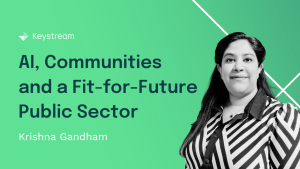31.01.2025
January Reflections: Resolutions, Data, and the Art of Structuring Chaos
Every January, I start the year with a plan. A structured, well-thought-out roadmap for the year ahead. It begins with data collection—pulling information from different sources, categorising it, scaling options, and arranging them neatly into a structured list. I analyse, prioritise, refine.
And then? Well, just like most well-intentioned plans, it all gets reshuffled, adjusted, or sometimes completely ignored once real-life priorities kick in.
But this process—collecting, structuring, and manipulating data—reminds me of what happens every time a hospital implements a new Electronic Patient Record (EPR) system.
A New EPR: The Promise of Structure and the Reality of Data Migration
When an EPR goes live, it’s not just a new system—it’s a new database, a new way of managing patient records, workflows, and processes. But behind the scenes, there’s a massive data migration effort, and that’s where things get complicated.
Hospitals need to translate their existing data into the new system. What stays? What goes? What’s critical? What’s obsolete?
This stage is filled with difficult questions:
- Standardisation – Does the new system define data in the same way as the old one?
- Essential vs. Non-Essential Data – What information is business-critical, and what can be archived?
- Legacy Data Complexity – How do you handle historical data that doesn’t fit the new system’s structure?
- Data Cleansing – What errors, duplicates, or inconsistencies need to be resolved before the transition?
At this point, teams meticulously map out everything, ensuring that patient records, operational workflows, and clinical data points are aligned. It’s a structured, carefully planned process, just like my January lists.
Post-GoLive: Data Manipulation in the Wild
But here’s where things get interesting.
Once an EPR is live, data manipulation doesn’t stop—in fact, it increases. The way data is used, interpreted, and shared evolves over time. Despite the structured approach taken during migration, once in real-world use, people start adjusting, modifying, and reshaping the system to fit their needs.
Some key post-GoLive questions emerge:
- How is data actually being used? The reports that seemed essential during planning may not be the ones clinicians rely on daily.
- What gets shared? Is the right information being made available to the right people, or are manual workarounds creeping in?
- How do users reshape the system? Despite the structured setup, teams inevitably create custom fields, workarounds, or alternative ways to manage their workflows.
From Data Structure to Data Fluidity
A new EPR starts with a structured plan—much like my January resolutions. But once it’s live, it becomes fluid, evolving with real-world use. The challenge isn’t just migrating data; it’s understanding how that data will be used, changed, and reshaped over time.
So, here’s my resolution for next year: not to start from scratch. Instead of building a new plan, I’ll refine the one I already have, based on how I actually use it.
Maybe hospitals should do the same with their data. Instead of treating GoLive as the finish line, perhaps the real question is: how do we continuously refine and improve data use after implementation?
What’s your experience with data after GoLive? How much of it is structured, and how much gets reshaped in practice? Let’s start that conversation.

